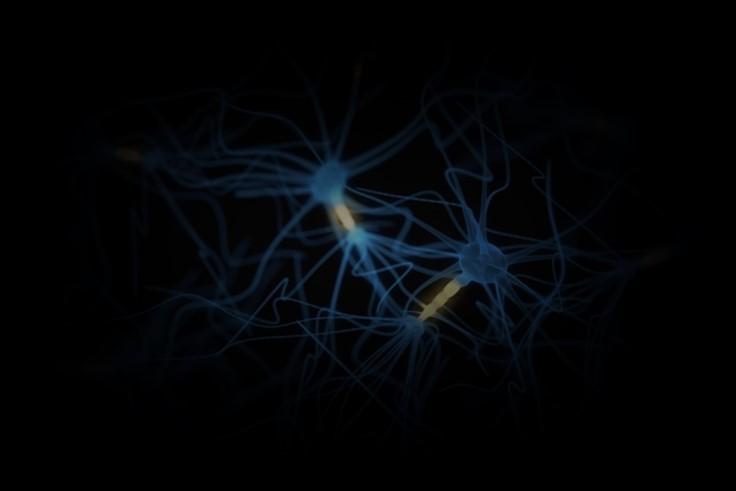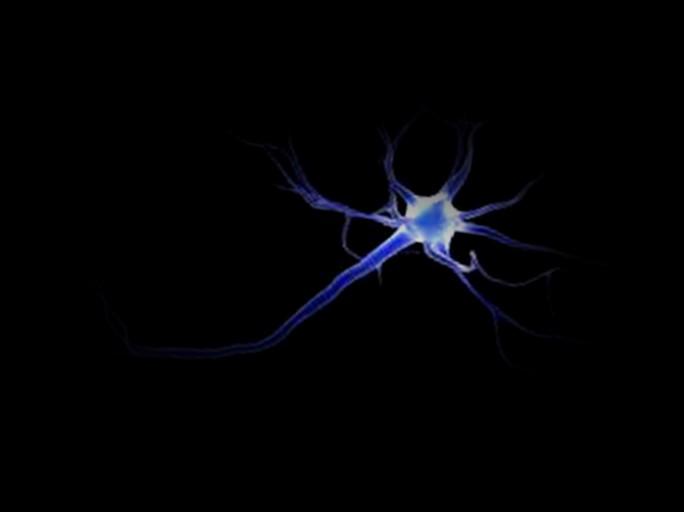
7 minute read
Rilyn McKallip Brains on Batteries: The Potential of Deep Brain Stimulation
Brains on Batteries: The Potential of Deep Brain Stimulation
By Joshua Pandian
For 40 years of her life, Edi Guyton could not experience happiness. Despite having a family and a successful career, she still struggled to feel happy. She tried various therapies and medications, but to no avail. Then, in 2007, Edi Guyton underwent an experimental procedure that allowed her to smile genuinely for the first time in her life. Due to two electrodes implanted in her brain and a small battery pack near her collar bone, Edi is now able to experience the joys of life like everyone else.10 Deep brain stimulation (DBS), the process of implanting electrodes into the brain to lessen the symptoms of neurological diseases, began as an experimental idea based on early pain-processing theories. Today, DBS is used to treat various neurological disorders, including Parkinson’s disease, depression, OCD, and chronic pain. While major advancements have been made in recent years, DBS is still in its infancy and possesses a tremendous potential to advance human well-being as our knowledge of neuroscience increases.
The History of Deep Brain Stimulation
The discovery of deep brain stimulation began in 1965 when Ronald Melzak and Patrick Wall proposed their gate-control theory of pain. Through their studies, Melzak and Wall discovered that nerve fibers that transmit information about touch and vibration are more myelinated, and therefore faster acting than nerve fibers that transmit pain signals. In the dorsal horn of the spinal cord, these fast-acting nerve fibers can inhibit pain signals from reaching the brain. The gate-control theory explains why we tend to rub our head when we hit it on a doorframe or grab our foot when we step on a Lego. Increasing touch signals helps inhibit pain.3
The gate-control theory of pain gave rise to ideas about how pain can be controlled from a bottom-up process, in which pain signals are processed via the spinal cord before reaching the brain. Then, in 1969, D.V. Reynolds discovered a top-down process in which the brain receives pain signals first and proceeds to inhibit them. In his study, Reynolds stimulated the periaqueductal gray regions in the midbrain of rats and performed surgery on them without anesthesia. The rats felt no pain for the duration of the surgery. 3 This phenomenon occurs because the periaqueductal gray region has associations with nerve fibers that send signals to the dorsal horn of the spinal cord, the same area where pain is inhibited during gate-control.2 Reynold’s study demonstrated that the brain also has the ability to inhibit pain. With the knowledge that pain can be inhibited from the spinal cord or from the midbrain, researchers attempted to cure chronic pain using two approaches. The first approach is spinal cord stimulation, which involves placing electrodes in the spinal cord to generate a pulse to keep pain signals from reaching the brain. This method of treating pain was originally believed to work due to gate-control theory, but currently research has shown that there may be more factors at play. Essentially, the added electrical signals from the electrodes inhibit the pain signals from reaching the brain.5 As a result of its success, spinal cord stimulation was FDA approved and used as a method for pain relief.3
The second method used to cure chronic pain was DBS, which was originally proposed in the 1970s. Electrodes were placed in the thalamus, the part of the brain responsible for directing pain signals for the somatosensory cortex for processing. Unfortunately, clinical trials did not produce convincing evidence for the effectiveness of DBS.3 Today, we know this is because the original trials were poorly executed,4 but at the time, it appeared DBS had reached an end.
DBS seemed to be a failed idea until the 1980s, when it was found to be effective in countering motor symptoms associated with Parkinson’s disease.3 Increased knowledge of the brain regions associated with Parkinson’s disease allowed scientists to better target areas to stimulate to help counter irregular activity. Even today, our knowledge of these brain regions continues to expand. For instance, a 2018 study on the interactions between the basal ganglia and thalamus revealed that in low dopamine environments, inhibitory output from the basal ganglia can cause rebound firing in the thalamus, leading to motor symptoms associated with Parkinson’s disease. 6 Modulating basal ganglia output or the rebound firing can help eliminate involuntary muscle contractions, so DBS can potentially be the answer to this problem.
Where is DBS Today?

After DBS was first approved in 1997, the applications of it have expanded beyond Parkinson’s disease. One example of this is the use of DBS to treat certain types of depression. In 2005, Dr. Helen Mayberg used DBS on Brodmann area 25, a part of the brain that has been identified as overactive in individuals with treatment resistant depression. According to the study, stimulating this region with electrodes can help decrease activity in the region, which in turn affects the hypothalamus and the brainstem. For patients receiving this treatment, this means better sleep, motivation, and energy. As this study shows, DBS is effective because it modulates multiple functions in the brain by changing processes in the target site and downstream.7
Patients suffering from obsessive compulsive disorder (OCD) may also be able to benefit from DBS. A recent study showed that targeting one of five possible brain areas can relieve OCD symptoms. However, it appears that stimulating the different regions have different impacts on the brain, so a more personalized approach must be taken to provide the appropriate treatment to each patient.8
Advances in using personalized DBS techniques have led researchers to again attempt combating chronic pain with DBS. Dr. Shirvalkar, an associate professor of anesthesiology at UC San Francisco, is using the technology available today to monitor neural activity over time in order to create DBS with varying electrical pulses depending on the situation.9 Studies such as these show promise for DBS to be more accurate and effective in the future.
What still needs to be done?

Although DBS is becoming more effective over time, there is still plenty of room for improvement. One of the biggest challenges facing the advancement of DBS is the current lack of understanding about how certain brain functions interact. While research can often get general ideas for what different brain regions do, it is still difficult to target which area to place the electrodes in order to have effective DBS. This is seen from the studies of DBS on OCD, where treatments of multiple brain regions appear to ease symptoms, but in different ways.8 Also, in some cases, a patient’s brain can become used to the deep brain stimulation, thus rendering the treatment ineffective. More research must be done in order to understand why DBS may cease to work in some patients.1 As research on the topic expands, patients will benefit from having DBS that is more personalized and effective in treating their specific condition.
References
1. “A cloud has been lifted”: What deep-brain stimulation tells us about depression and depression treatments. (2018, September 17). Brain & Behavior Research Foundation. https://www.bbrfoundation.org/content/cloud-has-been-lifted-what-deep-brainstimulation-tells-us-about-depression-and-depression
2. Behbehani, M. (1995). Functional characteristics of the midbrain periaqueductal gray. Progress in Neurobiology, 46(6), 575–605. https://doi.org/10.1016/0301-0082(95)00009-K
3. Coffey, R. J. (2009). Deep brain stimulation devices: A brief technical history and review. Artificial Organs, 33(3), 208–220. https://doi.org/10.1111/j.1525-1594.2008.00620.x
4. Farrell, S. M., Green, A., & Aziz, T. (2018). The current state of deep brain stimulation for chronic pain and its context in other forms of neuromodulation. Brain Sciences, 8(8). https://doi.org/10.3390/brainsci8080158
5. Jeon, Y. H. (2012). Spinal cord stimulation in pain management: A review. The Korean Journal of Pain, 25(3), 143–150. https://doi.org/10.3344/kjp.2012.25.3.143
6. Kim, J., & Kim, D. (2018). Rebound excitability mediates motor abnormalities in Parkinson’s disease. BMB Reports, 51(1), 3–4. https://doi.org/10.5483/BMBRep.2018.51.1.004
7. Mayberg, H. S., Lozano, A. M., Voon, V., McNeely, H. E., Seminowicz, D., Hamani, C., Schwalb, J. M., & Kennedy, S. H. (2005). Deep brain stimulation for treatment-resistant depression. Neuron, 45(5), 651–660. https://doi.org/10.1016/j.neuron.2005.02.014
8. Senova, S., Clair, A.-H., Palfi, S., Yelnik, J., Domenech, P., & Mallet, L. (2019). Deep brain stimulation for refractory obsessive-compulsive disorder: Towards an individualized approach. Frontiers in Psychiatry, 10. https://doi.org/10.3389/fpsyt.2019.00905
9. Tailoring deep brain stimulation to treat chronic pain. (n.d.). Tailoring Deep Brain Stimulation to Treat Chronic Pain | UC San Francisco. Retrieved April 23, 2020, from https:// www.ucsf.edu/news/2020/02/416601/tailoring-deep-brain-stimulation-treat-chronic-pain







